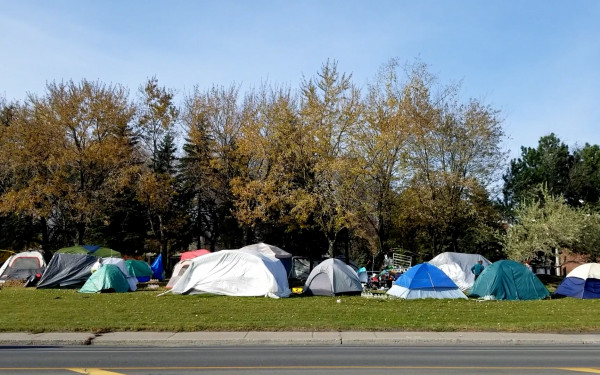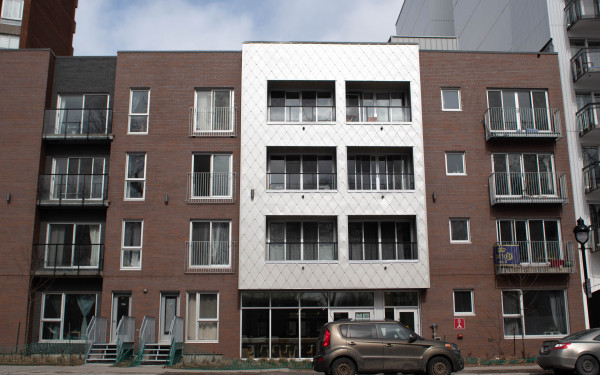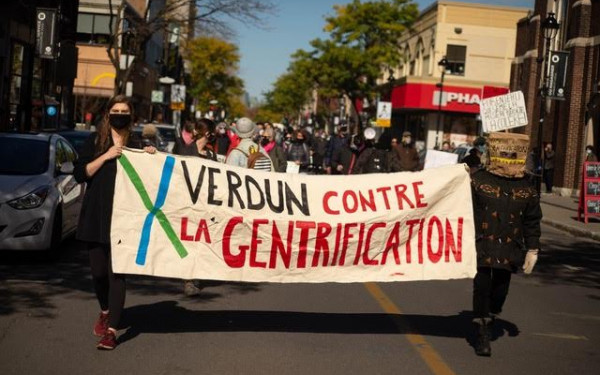Frigo Vert Workshop Outlines The Historical Roots Of Gentrification in Montreal
The Loss of Public Spaces and Affordable Housing
Gentrification plagues most of Montreal’s boroughs in some way, shape, or form. The city’s vacancy rate is at its lowest point in 15 years and rents have gone up on average 3.6 per cent since last year.
Le Frigo Vert held a workshop on Feb. 13 detailing the history behind Montreal’s housing crisis and how it’s reached such a critical point through malpractice from landlords and discrimination from legislators. Everything from illegal methods of raising rent prices or choosing tenants, to the increase in renovictions to which most tenants are left powerless.
“It should be much harder for landlords to evict people,” said Frigo Vert alumna Tamara Filyavich, who hosted the workshop. “The first thing they should do is to do something about the massive epidemic of renovictions that we’re seeing right now.”
One of the examples she outlined was Berlin’s five-year rent freeze when renovictions began to rise. Montreal is in a similar situation, and Filyavich believes that implementing the freeze would work here as well.
Throughout the workshop, Filyavich outlined the different historical practices used to both discriminate against minorities and push them out of their neighbourhoods. One was the concept of redlining, some neighbourhoods were deemed bad investments.
“They actually measure the demographics for a particular area and if a percentage of people of colour go over a certain number, they literally put a red line over that neighbourhood,” she said. “[If you get redlined] you’re never going to get a mortgage in that neighbourhood, you’re never going to get building insurance […] eventually people who own properties in those areas are going to disinvest from it.”
The US Housing act of 1937 helped determine which neighbourhoods were not fit for investment for banks and outlined them in red. This is where the practice got its name and it’s residents lost access to a lot of financial infrastructures.
For example, while most of the redlined neighbourhoods were populated mainly by people of colour, the New York borough of The Bronx was not. It was extremely mixed and what followed was a sort of white flight.
“These have become the norm because people don’t know that they’re not supposed to do that. Only people with good credit standing should have housing?” —Tamara Filyavich
“There were a lot of different immigrants from everywhere. There were a lot of small businesses that were thriving and it ended up becoming a very multi-ethnic neighbourhood,” said Filyavich. “[After the Bronx got redlined] it all started going downhill. When New York went bankrupt in the 70s, that’s where they would cut services first.”
“White people in that neighbourhood were able to get loans, find homes in the suburbs,” she said. “There was a huge white flight whereas if you were black, no matter how high paying a job you had or if you owned your own business, you could not get a loan to even buy your own home or even move out.”
While not government-sanctioned in Canada, a similar practice that remains unwritten was brought forward in the mid-20th century which led to social class disparities in different neighbourhoods to similar effects as redlined neighbourhoods in the US.
Above that, Filyavich had one main piece of advice for prospective tenants who are either moving or finding their first place but that wanted to do their share in stopping the spread of gentrification: know your rights.
Many people looking for an apartment don’t know credit checks are illegal. You have every right to refuse it and the landlord cannot reject your lease based on that.
“These have become the norm because people don’t know that they’re not supposed to do that,” said Filyavich. “Only people with good credit standing should have housing?”
There is also a calculator tool on the Régie du logement du Québec’s website that allows you to find out the maximum percentage your landlord can increase rent depending on the specifics of the apartment, your income, and what renovations—if any—were made.
“A lot of times people just don’t know that this is a rule so they blindly go along with it,” said Filyavich. “At the end of the day, people get exhausted looking for places and if a landlord doesn’t want to rent to you, they will not rent to you. Even if it’s not legal.”

_900_600_90.jpg)
_600_832_s.png)




_600_375_90_s_c1.jpg)